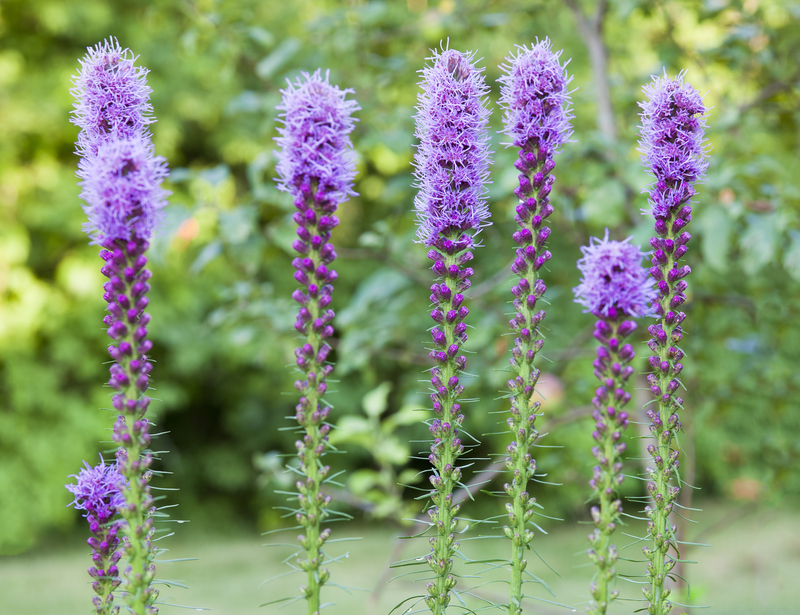Create a Garden Sanctuary for Your Little Ones
Posted on 12/09/2025
Create a Garden Sanctuary for Your Little Ones
Are you dreaming of a magical outdoor space where your children can play, learn, and grow? Creating a garden sanctuary for your little ones is more than just setting up a play area. It's about designing a nurturing, safe, and imaginative retreat that supports your child's development, creativity, and connection with nature. In this comprehensive guide, you'll discover how to craft a kid-friendly garden oasis filled with fun, education, and tranquility.
Why Build a Garden Sanctuary for Children?
A garden sanctuary for kids is more than just a trend--it's a transformative environment that enriches childhood. Here are compelling reasons to embark on this rewarding journey:
- Nurtures creativity and curiosity: Outdoor spaces spark imagination and adventure.
- Encourages physical activity: A dedicated play garden motivates children to move and explore.
- Promotes environmental awareness: Kids learn the value of plants, insects, and eco-systems firsthand.
- Fosters emotional well-being: Natural settings are proven to reduce stress and improve mood in children.
- Strengthens family bonds: Gardens provide shared adventures and valuable learning moments.

Key Features of a Kid-Friendly Garden Sanctuary
When you design a child-friendly garden, you want to ensure it appeals to their senses and meets their needs for fun and safety. Here are crucial elements to consider:
Safety First: Creating a Secure Haven
- Soft Surfaces: Use mulch, rubber mats, or grass to cushion play areas.
- Nontoxic Plants: Choose plants that are safe if touched or accidentally ingested.
- Fencing: Secure the perimeter to keep children inside and animals out.
- Shade: Offer shade through trees, pergolas, or shade sails for sun protection.
- Visible Boundaries: Make it easy for caregivers to supervise little ones by avoiding dense hedges or hidden corners.
Play & Learning Zones
- Imaginative Play Areas: Think fairy gardens, secret paths, and hidden nooks.
- Water Features: Add a small, shallow pond or a splash table for nature observation and water play (while monitoring closely).
- Mud Kitchens: Allow messy play with outdoor utensils and natural ingredients.
- Edible Gardens: Design areas where children can pick berries, cherry tomatoes, or herbs.
- Cubby Houses & Teepees: Create quiet zones for reading, drawing, or dreaming outdoors.
Nature's Classroom
A children's garden can be one of the best spots for hands-on learning. Incorporate:
- Raised beds for planting: Give kids their own mini-garden to tend.
- Wildlife habitats: Birdhouses, bug hotels, and butterfly puddling areas.
- Weather stations: Rain gauges, wind socks, and thermometers for budding scientists.
- Natural art corners: Stone mosaics, leaf prints, and flower pressing activities.
Planning Your Garden Sanctuary for Little Ones
1. Observe and Assess Your Space
Before breaking ground, spend time in your garden. See where the sun falls throughout the day, notice natural slopes, and consider visibility from the house. Ask yourself:
- Which spots offer natural shade or need sun protection?
- Are there existing plants or trees that could be focal features?
- What areas can be seen from the kitchen or living room windows?
- How can you break up the space into zones for different activities?
2. Collaborate with Your Kids
Include your children in the design process. They might imagine:
- A winding secret path
- A place to dig or build forts
- Favorite plants or animals they want to attract
- Colors and shapes that appeal to them
This collaboration gives them a sense of ownership and excitement.
3. Map Out Zones and Flows
Sketch a rough layout with designated spaces for active play, quiet time, gardening, and observation. Create gentle paths connecting these zones, using stepping stones, logs, or patterned pavers.
4. Choose Kid-Safe Materials and Plants
When selecting materials:
- Opt for natural timbers, untreated wood, and rounded stones to prevent splinters or scrapes.
- All surfacing should be non-slip and gentle on bare feet.
Selecting child-friendly plants:
- Avoid toxic varieties like foxglove, oleander, and lilies.
- Favor sensory plants: lamb's ear (soft touch), lavender (fragrant), nasturtiums (edible petals), and sunflowers (visual drama).
- Include a mix of annuals and perennials for year-round interest.
5. Build and Decorate Together
Install climbing structures, mud kitchens, or water play features as a family project. Paint fences, pebbles, or plant markers in vibrant colors and patterns your kids love.
Best Plants for a Children's Garden Sanctuary
- Sunflowers: Quick-growing and towering, these joyful blooms are irresistible to kids (and pollinators).
- Sugar snap peas: Edible pods picked straight from the vine are a favorite garden snack.
- Mint or Lemon balm: Fragrant and safe for little hands, perfect for sensory play.
- Strawberries: Sweet, low-maintenance, and rewarding for tiny gardeners.
- Calendula and marigolds: Brightly colored and excellent for pollinator support.
- Pumpkins: Allow kids to watch a seed become a jack-o'-lantern over the season.
Encourage Wildlife and Wonder
A garden sanctuary for little ones is even more enchanting when it's teeming with life. Encourage a thriving ecosystem by:
- Setting up bird feeders and baths to attract feathered visitors.
- Placing a bug hotel for beneficial insects like ladybugs and bees.
- Allowing parts of the lawn or flowerbed to go a little wild for butterflies and caterpillars.
- Adding small log piles for beetles and frogs.
Fun Activities to Enjoy in the Garden Sanctuary
Transform your backyard into an endless source of amusement and learning with these ideas:
- Treasure hunts: Create scavenger lists for different shapes, colors, or bugs.
- Art in Nature: Use leaves, stones, and flowers for collages and mandalas.
- Storytime or Picnic Corner: Lay down blankets and cushions for outdoor reading or snack breaks.
- Growing Competitions: Who can grow the tallest sunflower or the crunchiest carrot?
- Garden Journals: Keep a scrapbook or diary with sketches, pressed leaves, and notes on wildlife sightings.
Create a Year-Round Garden Sanctuary for Your Little Ones
A thriving garden sanctuary for children changes with the seasons:
- Spring: Sow quick-sprouting seeds like radishes or lettuce. Plant a mini wildflower meadow.
- Summer: Harvest fruits and veggies, enjoy water play, and watch butterflies flit about.
- Autumn: Collect acorns and leaves for crafts, plant bulbs for next spring, and carve homegrown pumpkins.
- Winter: Make bird feeders from pinecones and peanut butter, set up a weather station, or build snow forts if your climate allows.
Top Tips for Maintaining a Children's Garden Retreat
- Involve kids in easy chores: Watering, weeding, and harvesting instill responsibility and pride.
- Keep things simple: Avoid over-planting or clutter to allow for open spaces and spontaneous play.
- Regularly check for safety: Inspect for hazards such as loose nails, sharp rocks, or invasive weeds.
- Adapt with age: As children grow, update the garden features to match their evolving interests and abilities.
Inspiring Themes for Kids' Garden Sanctuaries
- Fairy Tale Forest: Windy paths, toadstool seats, and fairy doors glued to tree trunks.
- Pirate's Cove: Ship-themed play structure, "treasure sandpit," and a lookout post.
- Jungle Adventure: Lush ferns, bamboo screens, rope swings, and a dinosaur dig spot.
- Rainbow Garden: Flowerbeds arranged by color, rainbow stepping stones, and colorful flags.

Frequently Asked Questions about Children's Garden Sanctuaries
- How do I make my garden safe for toddlers?
Include physical barriers (fences, gates), soft surfaces, shade, and remove or avoid poisonous plants. - Will a children's garden sanctuary attract unwanted pests?
Encourage predators like birds and ladybugs; avoid chemical pesticides and practice regular, natural pest control. - How much space do I need for a kids' garden?
Even a small yard, balcony, or patio can offer a magical oasis with planters, sensory bins, and vertical gardens. - Can I combine a play area with a vegetable garden?
Absolutely! Raised beds, berry trellises, or "pizza gardens" with tomatoes and basil invite edible education and fun.
The Lasting Benefits of a Garden Sanctuary for Your Little Ones
A garden sanctuary just for kids isn't merely a trendy project--it's a lasting legacy that nurtures your child's health, confidence, respect for nature, and love of discovery. By creating an engaging, safe, and beautiful outdoor retreat, you empower your youngsters to grow with the seasons, explore freely, and forge joyful childhood memories.
Are you ready to start building your enchanted garden haven? Let your children's laughter, curiosity, and creativity bloom in their own backyard sanctuary--where every day is a new adventure, and every moment is a chance to grow.



